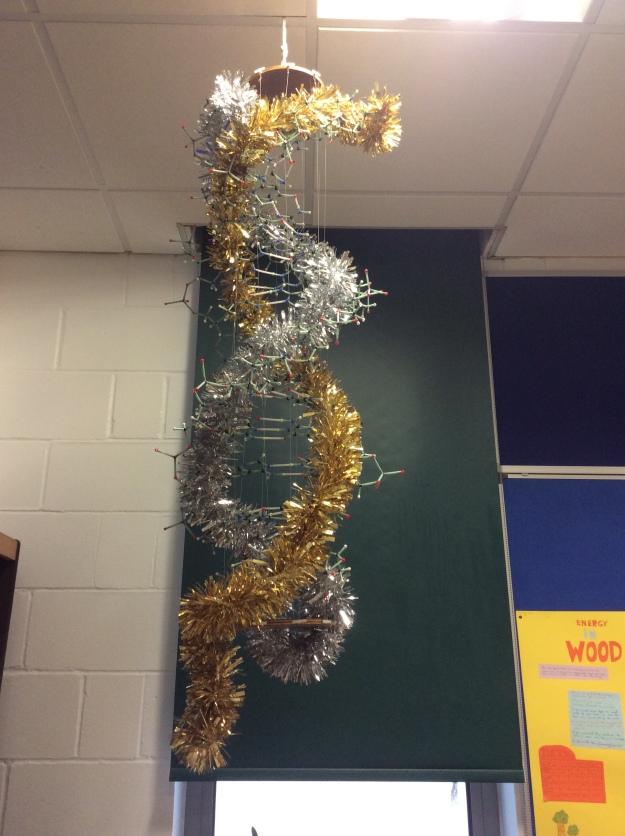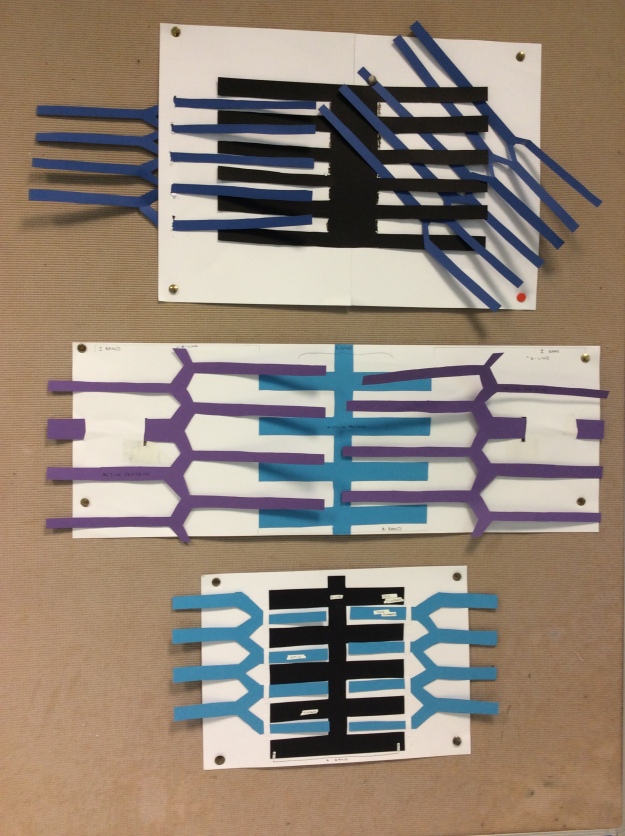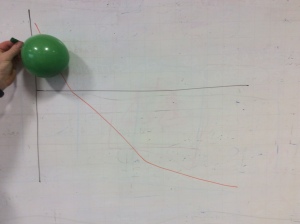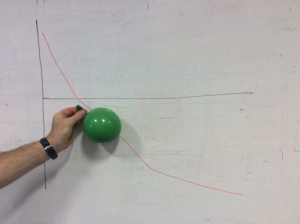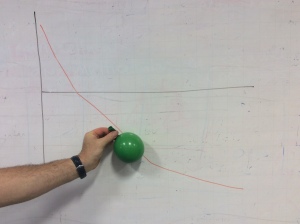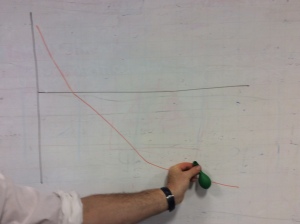As I’ve mentioned before, I’m a huge fan of role play in Science Lessons (see e.g. Enzymes and Immigration: Feb 11th 2015). Apart from anything else, it’s a great way of introducing an element of variety into your lessons. I like to see students arriving at the lab early asking, “what are we doing today?” Shows they don’t know what to expect, shows that your teaching isn’t becoming predictable…
From an educational perspective, role play can help in visualising biological processes, getting them to actually imagine what’s going on in the test tube/blood vessel/sperm duct, but it can help in other ways too.
I used to really dislike class discussions on the ethics of Biotechnology. In particular, I would get terribly frustrated by the apparent lack of imagination shown by students when asked to comment on the ethics of some aspect of biotechnology. Perhaps it says something about the quality of teaching they have in this area, but it’s depressing to see the inevitable kneejerk response:
Cloning? It’s Bad. Why? It’s unnatural…
Embryo selection? That’s Bad too. Why? It’s playing God…
Genetic modification? That’s Really Bad. Why? It’s playing God AND it’s unnatural….
I find these answers depressing because it shows they’re not actually thinking (it also shows they don’t understand what “ethical” means).
I used to counter this by trying to ridicule the response.
Smallpox? Bad? But why? It’s natural…
Kidney dialysis? Good? But why? It’s playing God…
I’d say things like, “quick! Turn off the lights and take off your clothes – they’re un-natural!”
But I came to realise that these were just cheap shots that weren’t helping the students think beyond their knee-jerk responses – they just ended up confused or frustrated. Even if they took the point on board, they still couldn’t formulate an intelligent, nuanced response to any generalised point and GCSE questions asking for possible ethical objections to cloning Dolly the Sheep would still be met with this dull, unthinking response. Or some nonsense about armies of Hitlers….
So why do they say it? My sense is that their response reflects a general unease with the technology and ideas they don’t fully understand combined with a lack of vocabulary to articulate how they’re feeling. So Spider Goats make them feel very uncomfortable because it’s just so weird – but how do you decide whether it’s actually good or bad?
The only way round this is to go for specifics and make them use the information. Getting them to compare and contrast some of the applications of Genetic Engineering helps them see that, maybe, perhaps, it’s worth looking at the individual cases. Genetic Modification might well be “playing God” if you want to use that kind of vocabulary, but wouldn’t a compassionate God approve of Golden Rice and the chance to prevent millions of children going blind? Wouldn’t that, possibly, be an ethically Good Thing, despite it’s obvious un-naturalness and human hi-jacking of the so-called prerogatives of the Almighty…. Contrast Golden Rice with GM maize resistant to Round-Up, and think up some ethical arguments against that particular application of the technology.
My favourite lesson, however, is one that was inspired by a lecture from the Head of the Human Fertility and Embryology Authority (HFEA). I’ve found it a hugely enjoyable and effective use of role play, as well as a spring board for fascinating discussion of biological ethics. The HFEA is the UK’s independent regulator overseeing the use of gametes and embryos in fertility treatment and research. In other words, if you want to make use of any technology involving either gametes and/or embryos, you have to get HFEA approval first. This makes sense. Given the limitless potential applications of this technology, any blanket decision, for or against, would make no sense at all. This is the strength of the lesson, as the students have to consider every case individually and quickly see that it’s much more interesting and complicated than the reaction, “it’s un-natural!” can ever convey.
The main lesson planning goes into thoughtful allocation of the roles. First, you need 4 students who play the part of the HFEA itself. You explain that they are the panel who ultimately decide whether to allow specific uses of the technology available. They need to discuss the merits of the cases brought to them, and that they must make a reasoned and humane decision on each one.
The rest of the class are then divided into groups playing a variety of roles. They take it in turns to present their cases to the HFEA panel –I give each couple a brief precis of their situation on a piece of paper (PGD and the HFEA role play blank) so that no-one knows in advance what’s coming. They not only have to explain their situation to the HFEA, they also have to get into role and argue their case as passionately and persuasively as possible. When they’ve finished, and the HFEA are deliberating, I ask the rest of the class what they think. We take a vote (yes or no) and then compare it with the decision reached by the panel. It’s really important to get them to explain their answers, to push them beyond the trite and meaningless.
So who are the couples? Well, this is the bit I really like, because these are all genuine examples brought to the HFEA, so not only can we compare the decisions of the class panel and the class audience, we can then check back and see what the real HFEA actually decided.
The first three couples have all heard about PGD (Pre-implantation Genetic Diagnosis) and all want the same thing, but for different reasons.
There’s a couple who want to use embryo selection to choose the sex of their next baby as they’ve got 4 boys and really want a girl.
There next couple have also had 4 boys and they also had a girl. But the girl died, aged 5, in a bonfire accident caused by two of the boys. They want to have another girl to replace the one they lost.
The third couple also want their next child to be a girl, but this time it’s because their first child was a boy suffering from Duchenne Muscular Dystrophy.
I like this progression because after the initial, outraged and unanimous rejection of the first case, they see how life can sometimes be a bit more complicated and that ethical decisions might not always be straightforward.
But what about the others?
The lesbian couple who want to fuse their eggs and have a child that is entirely their own….
The deaf couple who want to select an embryo for deafness so that their child can share this special disability that has brought them together….
The 60 year old woman who has 3 adult children from a previous marriage and has a new husband who has never had children. She can become pregnant with the correct hormonal treatment, and using a donor egg and her husband’s sperm….
The scientists who want to create hybrid human/animal embryos, using the eggs cells of rabbits and the nuclei from human cells….
The managers of a sperm bank who are concerned at the proposal to remove anonymity for sperm donors…..
The IVF children who want to find their biological fathers….
One particularly interesting thing that emerges is that the class decisions nearly always reflect the actual decision taken by the HFEA. I find that rather reassuring.
I think the students also find it reassuring that these decisions are given the weight and gravity of full legal consideration that they deserve – check out the HFEA website to see a full list of conditions yet to be decided. You could use it as a source for updating the role play list, or as a research homework. Or you could ask them to consider the Zain Hashmi case (Zain Hashmi and embryo selection; Info for Zain Hashmi article debate;Qs for Zain Hashmi article ).
But if you’ve never tried this kind of lesson, I’d really recommend it.

